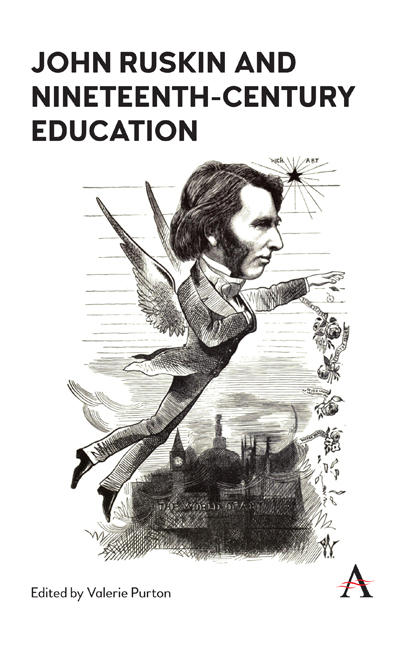Book contents
- Frontmatter
- Contents
- List of Figures
- Foreword
- Introduction
- Section A Changing the World
- Section B Libraries and the Arts
- Chapter 5 ‘A Very Precious Book’: Ruskin's Exegesis of the Psalms in Rock Honeycomb and Fors Clavigera
- Chapter 6 ‘Our Household Catalogue of Reference’: Ruskin's Lesson Photographs of 1875-76
- Chapter 7 Ruskin, Music and the Health of the Nation
- Chapter 8 Ruskin and the Fantastic
- Section C Christianity and Apocalypse
- Notes on Contributors
- Index
Chapter 8 - Ruskin and the Fantastic
from Section B - Libraries and the Arts
Published online by Cambridge University Press: 25 July 2018
- Frontmatter
- Contents
- List of Figures
- Foreword
- Introduction
- Section A Changing the World
- Section B Libraries and the Arts
- Chapter 5 ‘A Very Precious Book’: Ruskin's Exegesis of the Psalms in Rock Honeycomb and Fors Clavigera
- Chapter 6 ‘Our Household Catalogue of Reference’: Ruskin's Lesson Photographs of 1875-76
- Chapter 7 Ruskin, Music and the Health of the Nation
- Chapter 8 Ruskin and the Fantastic
- Section C Christianity and Apocalypse
- Notes on Contributors
- Index
Summary
I lay awake half (no, a quarter) of last night, thinking of the hundred things I want to say to you […]. Well, of the thousand things – it was nearer a thousand than a hundred – ‘[…] No. 4 of the thousand. Do you ever see blue sky? And when you do, do you like it? No. 5. Is a witches’ ride on a broomstick the only chivalry you think it desirable to remind the glorious nineteenth century of? No. 6. Do you believe in Fairies?’
(XXXVII.307– 8)Ruskin wrote to Kate Greenaway with these bizarre queries in January 1880: her answer is not, I think, known. Ruskin's own answer to question No. 6 is known, however. In Modern Painters, he admitted that as a child he ‘partly believed in ghosts and fairies’ (III.336). Belief, he wrote in his lecture on ‘Fairy- Land’, is what you have when you do not have sufficient evidence. Once the man who did not believe in the power of nitroglycerine had been blown out of the house, he did not believe that nitroglycerine was dangerous, he knew it (XXXIII.333).
This chapter is largely about Ruskin's own fairy tale, The King of the Golden River, and it ends discussing the role Ruskin ascribed to fairy tales in a child's education. But I will start by pointing out that fairies and fairy- land played a significant part in his imagination right through his adult life. Fairies and fairy- land coloured his view of landscape: the Meuse, for instance, excelled in ‘that romantic and picturesque fairy beauty’ (II.349); Mont Blanc ‘seemed in another world, in fairy- land’ (II.381). He notes in Modern Painters that he does not feel ‘the old German fear’ in a pine- glade, but ‘a more solemn tone of the fairy enchantment that haunts our English meadows, so that I have always called the prettiest pine- glade in Chamouni [sic], “Fairies’ Hollow” ‘ (V.106). Fairyland can be found in his art criticism, too. A medieval missal was ‘a fairy cathedral full of painted windows, bound together to carry in one's pocket’ (XXXV.491). He writes of the ‘fairy traceries’ of Giotto's Campanile in Florence, and the ‘fretted niche and fairy pediment’ of medieval buildings in Normandy (XII.311).
- Type
- Chapter
- Information
- John Ruskin and Nineteenth-Century Education , pp. 129 - 146Publisher: Anthem PressPrint publication year: 2018



